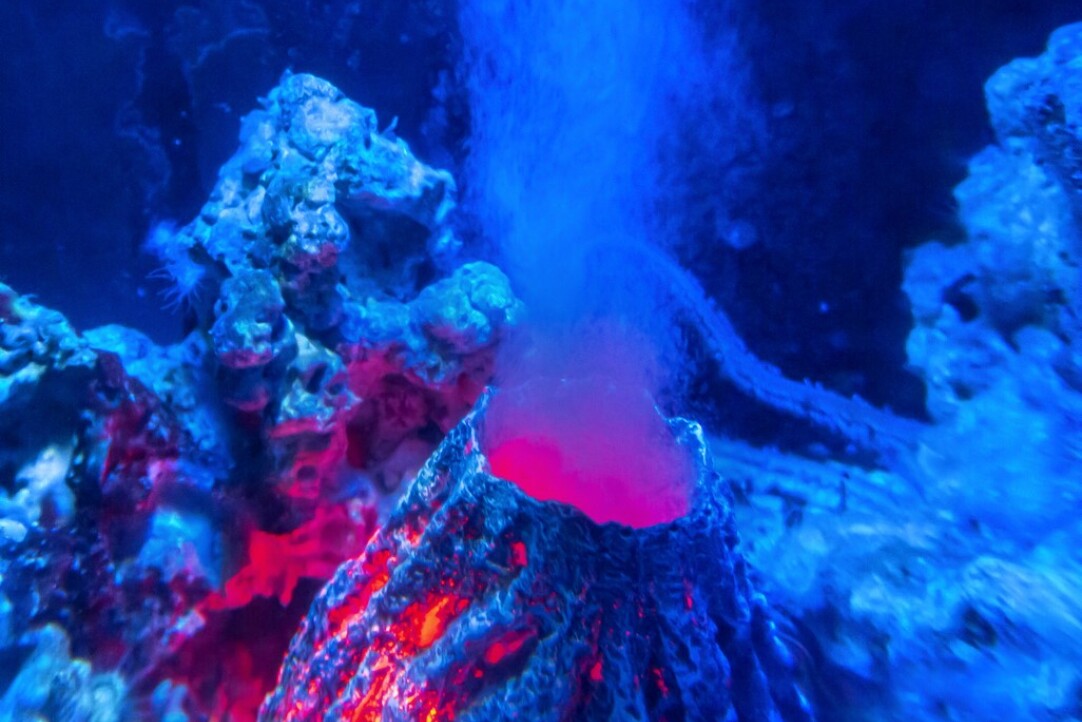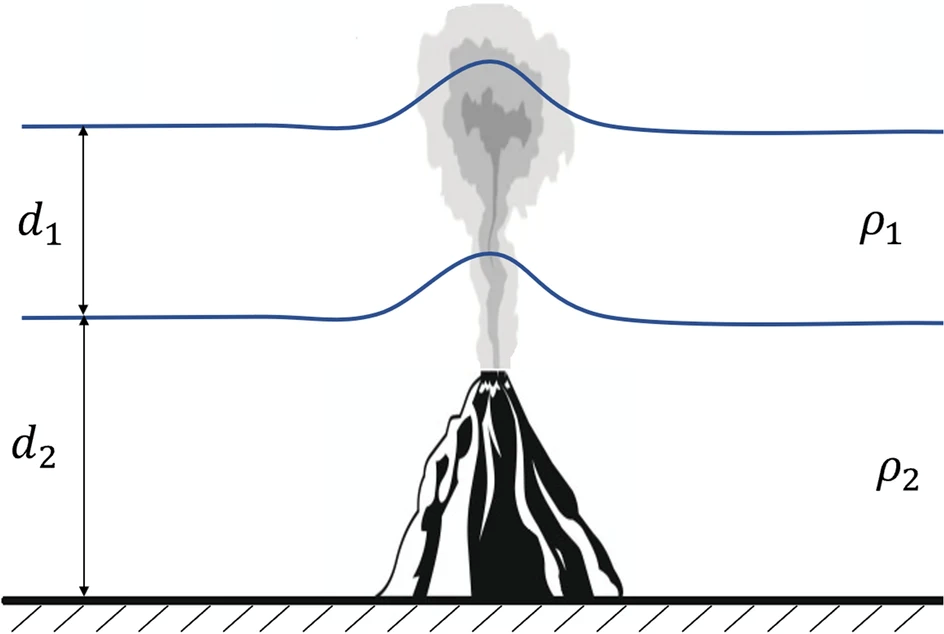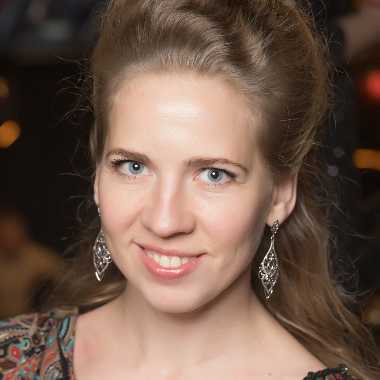Russian Scientists Assess Dangers of Internal Waves During Underwater Volcanic Eruptions

Mathematicians at HSE University in Nizhny Novgorod and the A.V. Gaponov-Grekhov Institute of Applied Physics of the Russian Academy of Sciences studied internal waves generated in the ocean after the explosive eruption of an underwater volcano. The researchers calculated how the waves vary depending on ocean depth and the radius of the explosion source. It turns out that the strongest wave in the first group does not arrive immediately, but after a significant delay. This data can help predict the consequences of eruptions and enable advance preparation for potential threats. The article has been published in Natural Hazards. The research was carried out with support from the Russian Science Foundation (link in Russian).
Layers of water with varying temperature, density, and salinity form in an ocean column. Internal waves arise at the boundaries of these layers due to external forces such as wind, currents, earthquakes, and volcanic eruptions, which cause the upper and lower layers to shift relative to each other. The boundary starts to oscillate, attempting to return to its original position under the influence of buoyancy forces. Since the density difference between the layers is small, internal waves have a larger amplitude (usually 5–20 metres but sometimes up to 150 metres) compared to surface waves, where the density contrast between water and air is much greater.
Although the speeds of internal waves are relatively slow (typically only a few dozen centimetres per second), they can still pose a serious threat to hydraulic structures, underwater gas and oil pipelines, and can also lead to the erosion of the ocean floor. Disasters involving at least three submarines have been attributed to the effects of internal waves: the two American atomic submarines, USS Thresher in 1963 and USS Scorpion in 1968, and the Indonesian diesel submarine KRI Nanggala-402 in 2021.
‘During underwater volcanic eruptions and earthquakes, the primary danger comes from surface tsunami waves, which can have amplitudes of up to 30 meters on the coast and can be highly destructive. Internal waves are typically not considered in such cases. However, a recent article by Chinese colleagues reported for the first time the observation of internal waves during a volcanic eruption in the Tonga Archipelago in 2022. This sparked our interest in studying the characteristics of internal waves,’ explains co-author of the study Ekaterina Didenkulova, Leading Research Fellow at the International Laboratory of Dynamical Systems and Applications at HSE University in Nizhny Novgorod.
Le Mehaute’s parabolic cavern was chosen as a source of tsunami waves. This model is commonly used to calculate surface tsunami waves generated by underwater explosions, volcanic eruptions, and meteorite impacts in water. It was considered that the curves connecting points with the same seawater density (isopycnals) bend over an underwater volcano in the same way as the water surface.

Calculations reveal that internal waves generated by the eruption of an underwater volcano form frequency-modulated groups, with the first group exhibiting the largest amplitude. The characteristics of internal waves depend on the ratio of layer thicknesses, the source radius, and the distance from the source. Even at relatively small distances from the source, the wave amplitudes change gradually, allowing the source of a tsunami to be identified from internal waves using remote sensing of the sea surface. This approach makes it possible to obtain additional information about the tsunami and mitigate potential damage caused by the disaster.
'The amplitudes of the waves in the remote zone are a percentage of their height at the source, but when translated into real numbers, they can correspond to several metres. Thus, the eruption site of the Krakatoa volcano in 1883 had a height of 200 metres and a radius of three kilometres. Our calculations indicate that the height of an internal wave at a distance of 300 kilometres can be around 10 meters, which could still pose a danger,' comments Efim Pelinovsky, Chief Research Fellow at the International Laboratory of Dynamical Systems and Applications at HSE University in Nizhny Novgorod.
See also:
Scientists Have Modelled Supercapacitor Operation at Molecular and Ionic Level
HSE scientists used supercomputer simulations to study the behaviour of ions and water molecules inside the nanopores of a supercapacitor. The results showed that even a very small amount of water alters the charge distribution inside the nanopores and influences the device’s energy storage capacity. This approach makes it possible to predict how supercapacitors behave under different electrolyte compositions and humidity conditions. The paper has been published in Electrochimica Acta. The study was supported by a grant from the Russian Science Foundation (RSF).
Designing an Accurate Reading Skills Test: Why Parallel Texts are Important in Dyslexia Diagnosis
Researchers from the HSE Centre for Language and Brain have developed a tool for accurately assessing reading skills in adults with reading impairments. It can be used, for instance, before and after sessions with a language therapist. The tool includes two texts that differ in content but are equal in complexity: participants were observed to read them at the same speed, make a similar number of errors, and understand the content to the same degree. Such parallel texts will enable more accurate diagnosis of dyslexia and better monitoring of the effectiveness of interventions aimed at addressing it. The paper has been published in Educational Studies.
Internal Clock: How Heart Rate and Emotions Shape Our Perception of Time
Our perception of time depends on heart rate—this is the conclusion reached by neuroscientists at HSE University. In their experiment, volunteers watched short videos designed to evoke specific emotions and estimated each video's duration, while researchers recorded their heart activity using ECG. The study found that the slower a participant's heart rate, the shorter they perceived the video to be—especially when watching unpleasant content. The study has been published in Frontiers in Psychology.
Scientists Identify Personality Traits That Help Schoolchildren Succeed Academically
Economists from HSE University and the Southern Federal University have found that personality traits such as conscientiousness and open-mindedness help schoolchildren improve their academic performance. The study, conducted across seven countries, was the first large-scale international analysis of the impact of character traits on the academic achievement of 10 and 15-year-olds. The findings have been published in the International Journal of Educational Research.
HSE Scientists Reveal How Disrupted Brain Connectivity Affects Cognitive and Social Behaviour in Children with Autism
An international team of scientists, including researchers from the HSE Centre for Language and Brain, has for the first time studied the connectivity between the brain's sensorimotor and cognitive control networks in children with autism. Using fMRI data, the researchers found that connections within the cognitive control network (responsible for attention and inhibitory control) are weakened, while connections between this network and the sensorimotor network (responsible for movement and sensory processing) are, by contrast, excessively strong. These features manifest as difficulties in social interaction and behavioural regulation in children. The study has been published in Brain Imaging and Behavior.
Similar Comprehension, Different Reading: How Native Language Affects Reading in English as a Second Language
Researchers from the MECO international project, including experts from the HSE Centre for Language and Brain, have developed a tool for analysing data on English text reading by native speakers of more than 19 languages. In a large-scale experiment involving over 1,200 people, researchers recorded participants’ eye movements as they silently read the same English texts and then assessed their level of comprehension. The results showed that even when comprehension levels were the same, the reading process—such as gaze fixations, rereading, and word skipping—varied depending on the reader's native language and their English proficiency. The study has been published in Studies in Second Language Acquisition.
Mortgage and Demography: HSE Scientists Reveal How Mortgage Debt Shapes Family Priorities
Having a mortgage increases the likelihood that a Russian family will plan to have a child within the next three years by 39 percentage points. This is the conclusion of a study by Prof. Elena Vakulenko and doctoral student Rufina Evgrafova from the HSE Faculty of Economic Sciences. The authors emphasise that this effect is most pronounced among women, people under 36, and those without children. The study findings have been published in Voprosy Ekonomiki.
Scientists Discover How Correlated Disorder Boosts Superconductivity
Superconductivity is a unique state of matter in which electric current flows without any energy loss. In materials with defects, it typically emerges at very low temperatures and develops in several stages. An international team of scientists, including physicists from HSE MIEM, has demonstrated that when defects within a material are arranged in a specific pattern rather than randomly, superconductivity can occur at a higher temperature and extend throughout the entire material. This discovery could help develop superconductors that operate without the need for extreme cooling. The study has been published in Physical Review B.
Scientists Develop New Method to Detect Motor Disorders Using 3D Objects
Researchers at HSE University have developed a new methodological approach to studying motor planning and execution. By using 3D-printed objects and an infrared tracking system, they demonstrated that the brain initiates the planning process even before movement begins. This approach may eventually aid in the assessment and treatment of patients with neurodegenerative diseases such as Parkinson’s. The paper has been published in Frontiers in Human Neuroscience.
Civic Identity Helps Russians Maintain Mental Health During Sanctions
Researchers at HSE University have found that identifying with one’s country can support psychological coping during difficult times, particularly when individuals reframe the situation or draw on spiritual and cultural values. Reframing in particular can help alleviate symptoms of depression. The study has been published in Journal of Community Psychology.




